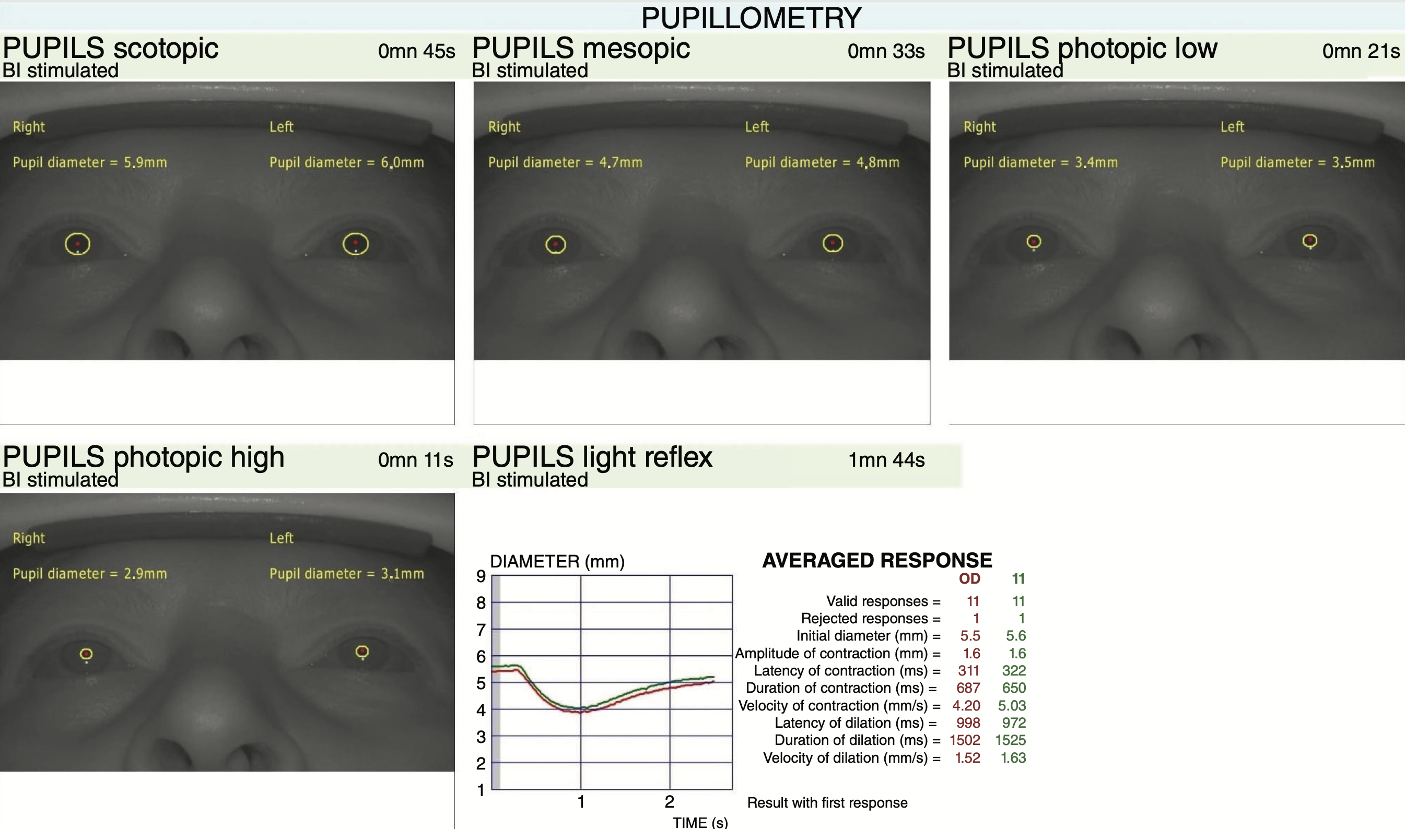 |
Automated pupillometry may prove a helpful diagnostic tool for early-stage glaucoma detection. Photo: Metrovision. Click image to enlarge. |
Researchers recently looked at newly diagnosed, treatment-naïve primary open-angle glaucoma (POAG) and how static vs. dynamic attributes may differ due to optic nerve dysfunction. The prospective study, appearing in Glaucoma, included 40 eyes from 40 subjects with POAG and 71 eyes from 71 healthy controls.
Parameters recorded with an automated pupillometry device included the static measurements of pupil diameter in high-photopic, low-photopic, mesoscopic and scotopic light conditions. Dynamic parameters were resting diameter, amplitude, latency, duration and velocity of pupil contraction and dilation.
The researchers found POAG patients to display lower pupil contraction duration, longer pupil dilation latency, shorter pupil dilation duration and lower pupil dilation velocity. However, the two groups did not display differences in static characteristics or resting pupil diameter.
The authors of the study explained that these parameters were studied “since the relationship between autonomic nervous system dysfunction and glaucoma is known.” As such, they “designed this study thinking that objective and quantitative evaluation of pupillary light response in early-stage POAG can guide clinicians as an early marker in POAG diagnosis.”
Further elaborated on is the point that previous studies have outlined other differences observed between pupillary light responses with varying demographics. Some report that baseline pupil diameter decreases with age, affecting pupil contraction amplitude.
Studies are mixed when looking at pupillary light response, with one citing an increase with age, another citing no effect of aging on the response and one that found pupillary light response amplitude was dependent on baseline pupil diameter but independent of age, sex and race. The present study reflects the latter, finding no relationship between age, sex and pupil parameters for both included groups.
Yet another study corroborated the present one, concluding from their research that glaucoma patients exhibited smaller amplitude, longer latency and lower contraction and dilation velocities compared with controls. This was found to be independent of the stage of glaucoma.
The authors explained their findings in relation to newer research on the cells responsible for the pupillary light response. Photoreceptors called intrinsically photosensitive retinal ganglion cells (ipRGCs) were first identified in the 2000s. Since their identification, further research has indicated damage to this cell type in glaucoma cases. Multiple studies have found similar results, with an impaired pupillary light response in patients with advanced glaucoma when compared with controls.
While changes in pupillary light response have not been observed in early-stage glaucoma in the past, the impaired dynamic changes the researchers of this study found suggest that glaucomatous ipRGC damage could be seen in early-stage POAG.
The authors concluded that the technology used in this research may prove most beneficial, stating that “automated pupillometry may be a useful clinical diagnostic method for detecting early-stage glaucoma.” They do warn, though, that “as with all other tests used in the diagnosis of glaucoma, automated pupillometry cannot be used alone as a screening tool for glaucoma in its current form.”
Bayraktar S, Hondur G, Şekeroğlu MA, Şen E. Evaluation of static and dynamic pupillary functions in early stage primary open angle glaucoma. Glaucoma. March 22, 2023. [Epub ahead of print]. |


